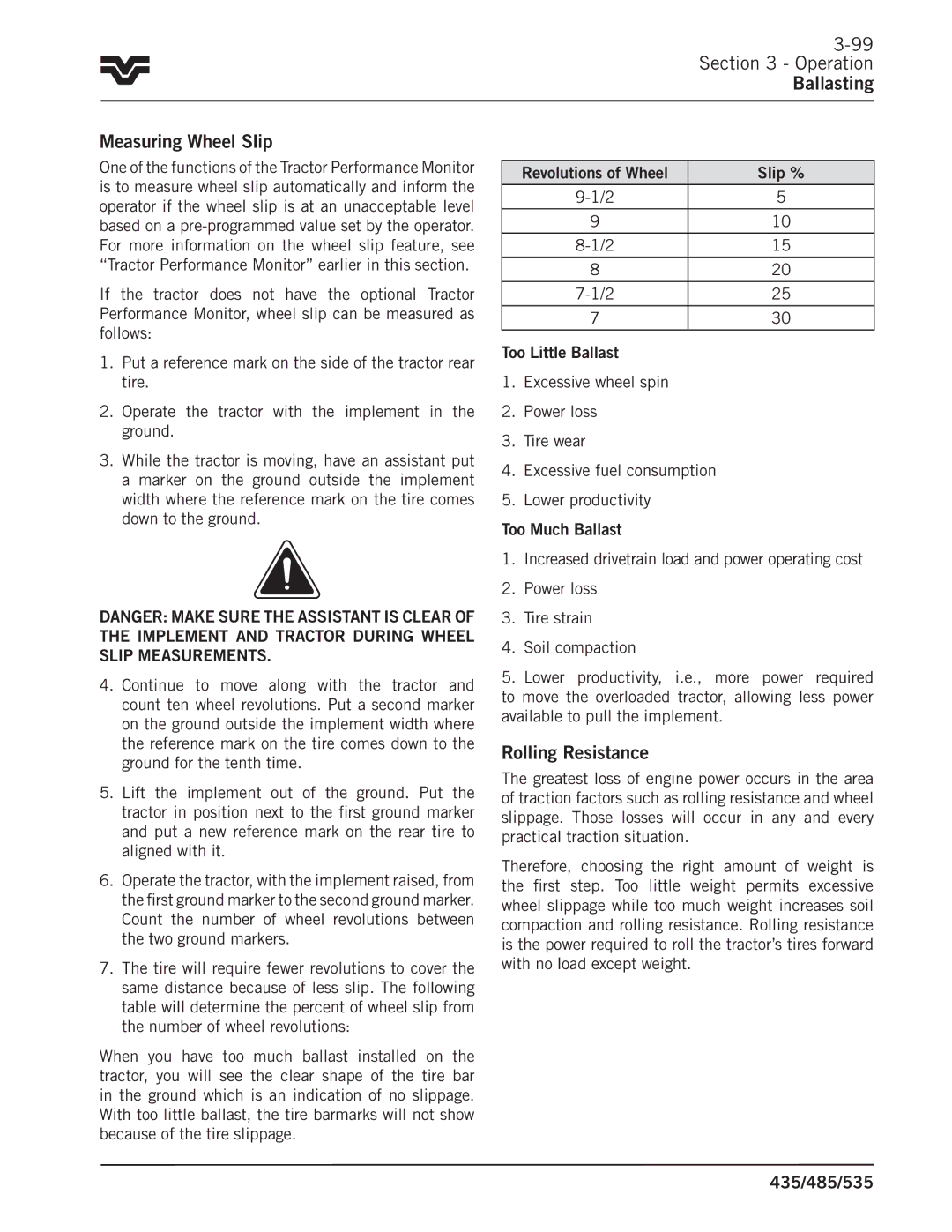
3-99 Section 3 - Operation Ballasting
Measuring Wheel Slip
One of the functions of the Tractor Performance Monitor is to measure wheel slip automatically and inform the operator if the wheel slip is at an unacceptable level based on a
If the tractor does not have the optional Tractor Performance Monitor, wheel slip can be measured as follows:
1.Put a reference mark on the side of the tractor rear tire..
2.Operate the tractor with the implement in the ground..
3.While the tractor is moving, have an assistant put a marker on the ground outside the implement width where the reference mark on the tire comes down to the ground..
DANGER: MAKE SURE THE ASSISTANT IS CLEAR OF THE IMPLEMENT AND TRACTOR DURING WHEEL SLIP MEASUREMENTS.
4.Continue to move along with the tractor and count ten wheel revolutions.. Put a second marker on the ground outside the implement width where the reference mark on the tire comes down to the ground for the tenth time..
5.Lift the implement out of the ground.. Put the tractor in position next to the first ground marker and put a new reference mark on the rear tire to aligned with it..
6.Operate the tractor, with the implement raised, from the first ground marker to the second ground marker.. Count the number of wheel revolutions between the two ground markers..
7.The tire will require fewer revolutions to cover the same distance because of less slip.. The following table will determine the percent of wheel slip from the number of wheel revolutions:
When you have too much ballast installed on the tractor, you will see the clear shape of the tire bar in the ground which is an indication of no slippage.. With too little ballast, the tire barmarks will not show because of the tire slippage..
Revolutions of Wheel | Slip % |
|
|
5 | |
9 | 10 |
|
|
15 | |
|
|
8 | 20 |
|
|
25 | |
|
|
7 | 30 |
Too Little Ballast
1.Excessive wheel spin
2.Power loss
3.Tire wear
4.Excessive fuel consumption
5.Lower productivity
Too Much Ballast
1.Increased drivetrain load and power operating cost
2.Power loss
3.Tire strain
4.Soil compaction
5. Lower productivity, i..e.., more power required to move the overloaded tractor, allowing less power available to pull the implement..
Rolling Resistance
The greatest loss of engine power occurs in the area of traction factors such as rolling resistance and wheel slippage.. Those losses will occur in any and every practical traction situation..
Therefore, choosing the right amount of weight is the first step.. Too little weight permits excessive wheel slippage while too much weight increases soil compaction and rolling resistance.. Rolling resistance is the power required to roll the tractor’s tires forward with no load except weight..
